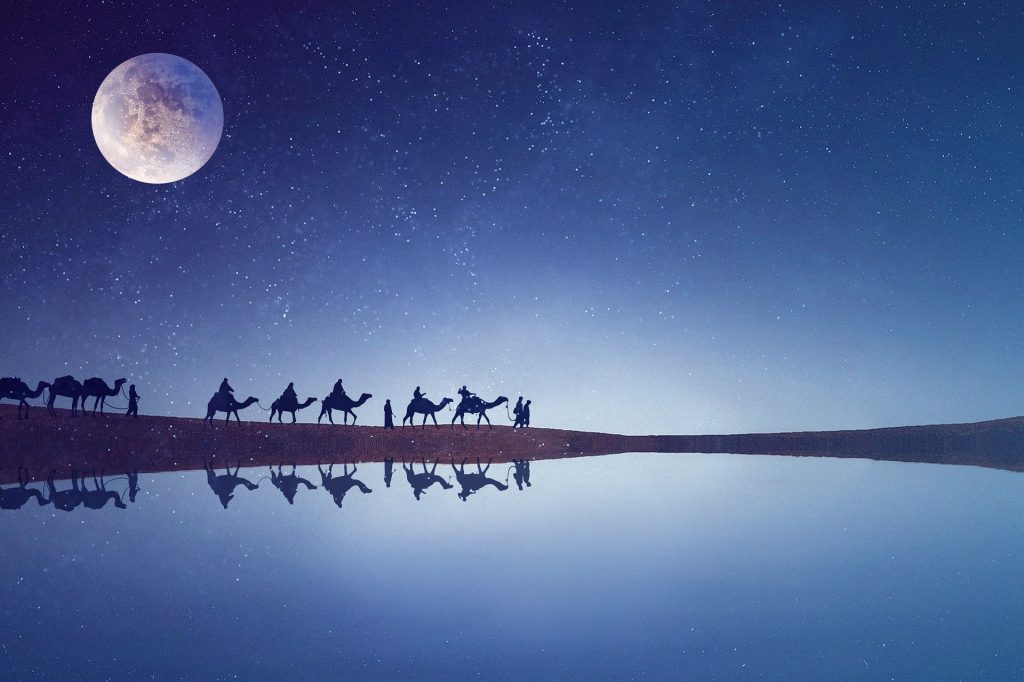The Silk Road, a term coined by German geographer Ferdinand von Richthofen in the 19th century, evokes images of caravans laden with precious silks, exotic spices, and diverse cultural influences traveling through vast and rugged landscapes. These ancient trade routes, which connected the East and West, played a pivotal role in shaping the world as we know it. Join us as we embark on a journey to trace the splendors of the Silk Road, where history, culture, and commerce converged.
The Silk Road’s Origins
The Silk Road has its roots in the distant past, dating back to the Han Dynasty in China. These ancient routes were not just for the exchange of goods but also for the sharing of ideas and cultures. The Silk Road connected China to the Mediterranean world, facilitating the flow of goods and knowledge.
Trade and Cultural Exchange
The Silk Road was not just about trade; it was a conduit for cultural exchange. Goods, ideas, and even religions moved along these routes. Buddhism, for instance, made its way from India to China, while Chinese silks found their way to the Roman Empire. The interaction of different cultures gave rise to a rich tapestry of human history.
Key Cities and Routes
The Silk Road was a vast network of interconnected routes and cities. Cities like Xi’an, Dunhuang, Samarkand, and Constantinople played pivotal roles in facilitating trade and cultural interaction. These cities were oases of prosperity along the arduous journey.
The Great Wall and Silk Road
The Great Wall of China, often associated with military defense, also played a significant role in protecting trade caravans traveling along the Silk Road. The wall served as a guardian of these valuable trade routes, shielding them from marauding invaders.
Silk and Other Commodities
While silk is the most famous product associated with the Silk Road, a multitude of other commodities were exchanged. Precious gems, spices, ceramics, and even knowledge were all part of this grand exchange. The Silk Road truly became a global marketplace.
Decline and Legacy
The decline of the Silk Road was influenced by factors like the rise of maritime trade routes and political changes. However, its legacy endures. The ideas, goods, and cultures that traversed these routes continue to influence the world to this day.
Modern Exploration and Preservation
Efforts to preserve and revive the Silk Road have gained momentum in recent years. Travelers now have the opportunity to retrace the steps of the ancient Silk Road caravans. Whether by land or by rail, these journeys offer a unique opportunity to experience history.
The Beauty of Dunhuang
Dunhuang, a city along the Silk Road, is celebrated for the Mogao Caves, a treasure trove of Buddhist art and manuscripts. The art and culture found in Dunhuang are testaments to the enduring legacy of the Silk Road.
The Taklamakan Desert Adventure
One of the most formidable challenges faced by Silk Road travelers was the Taklamakan Desert. Its vast, shifting dunes posed a significant obstacle. Traversing this desert required courage, preparation, and determination.
Tracing the Silk Road Today
Modern methods for tracing the Silk Road include following established itineraries and joining guided tours. These journeys often bring travelers through stunning landscapes and connect them with the vibrant cultures along the route.
The Magic of Samarkand
Samarkand, located in modern-day Uzbekistan, is one of the most magical cities along the Silk Road. With a history dating back thousands of years, Samarkand has been a crossroads of cultures and a place of great beauty. Exploring its architecture, markets, and cuisine is a delight.
Conclusion: A Timeless Adventure
The Silk Road is more than just an ancient trade route; it’s a bridge between the past and the present. It’s a testament to the enduring power of human curiosity and enterprise. The allure of the Silk Road continues to beckon, inviting modern adventurers to follow in the footsteps of those who shaped the course of history.
FAQs
Can travelers still follow the original Silk Road routes?
- While some parts of the original routes are no longer accessible, there are modern itineraries and tours that allow travelers to follow the spirit of the Silk Road.
What are the best times to explore the Silk Road routes?
- Spring and autumn are generally the best times for exploring the Silk Road, as the weather is milder, and the landscapes are at their most beautiful.
Is the Silk Road primarily a land-based route?
- While the Silk Road is often associated with land-based caravans, it also had a maritime component, with trade occurring along sea routes.
What are some of the challenges faced by modern travelers exploring the Silk Road?
- Modern travelers may encounter challenges such as navigating remote regions, language barriers, and the need for cultural sensitivity.
What is the role of UNESCO in preserving Silk Road heritage?
- UNESCO has recognized several sites and routes along the Silk Road as World Heritage Sites, contributing to their preservation and international significance.
